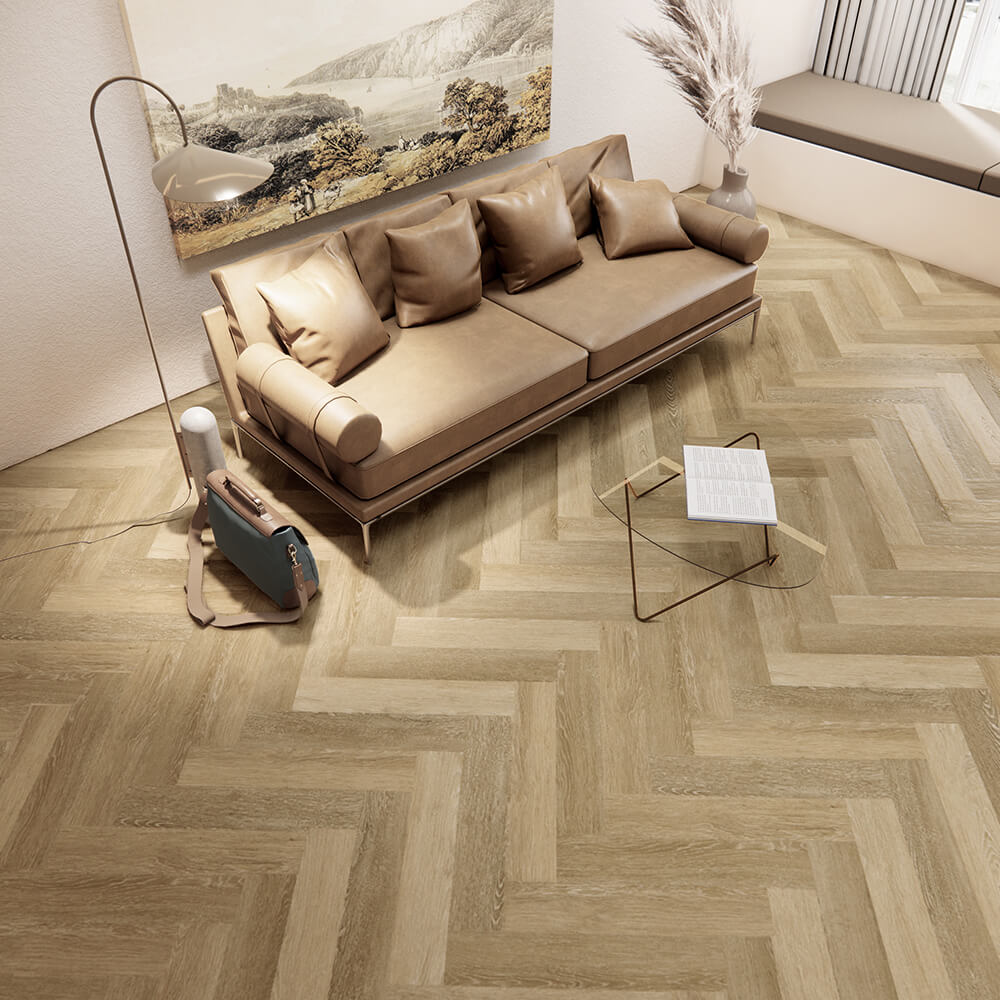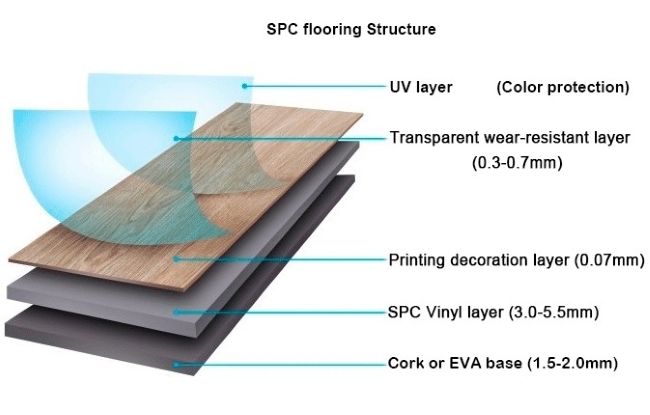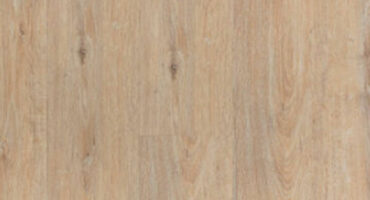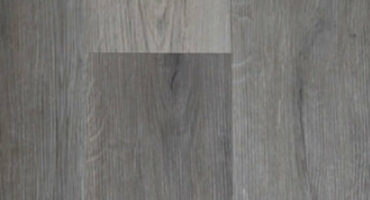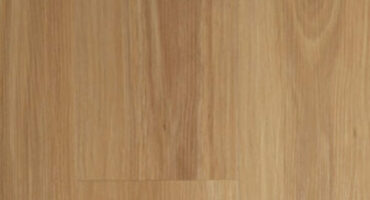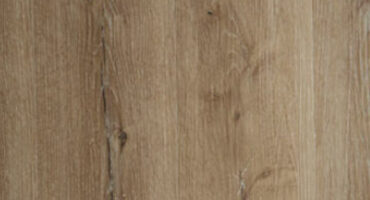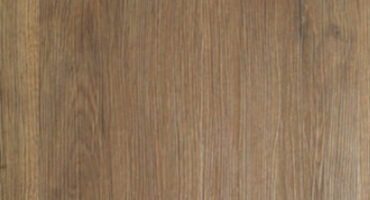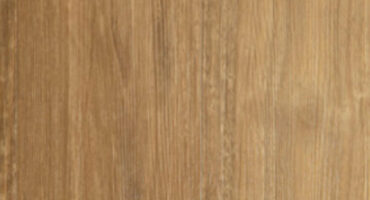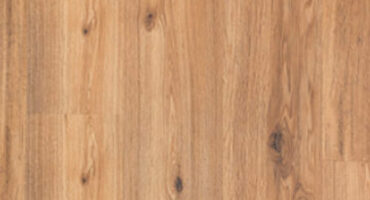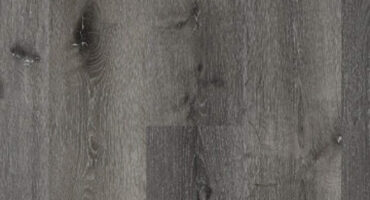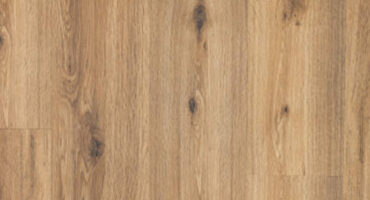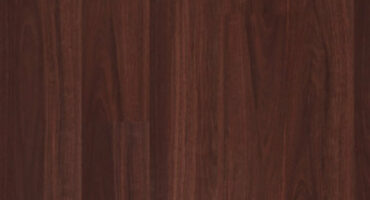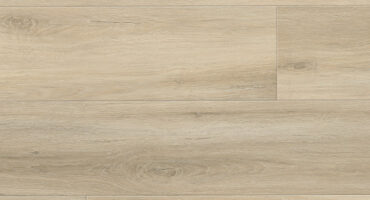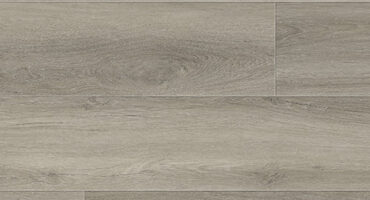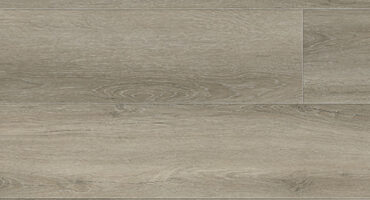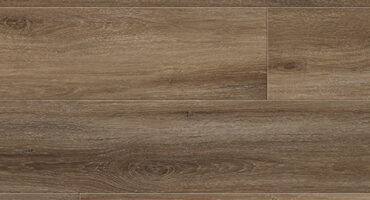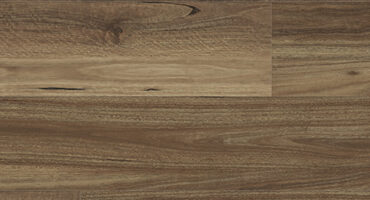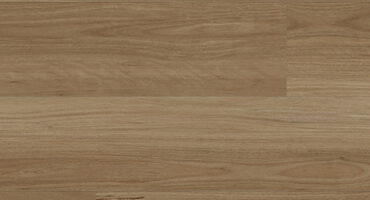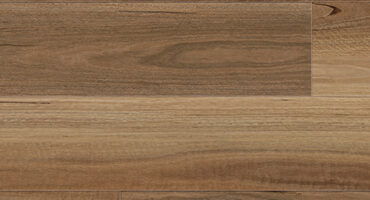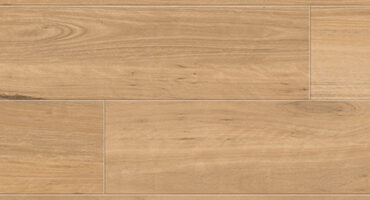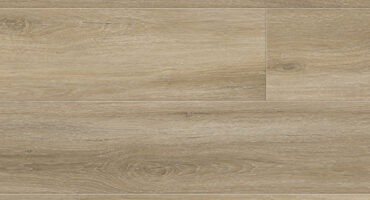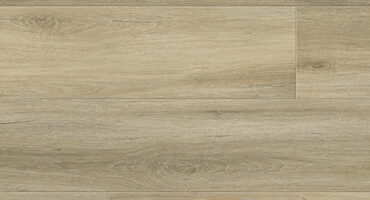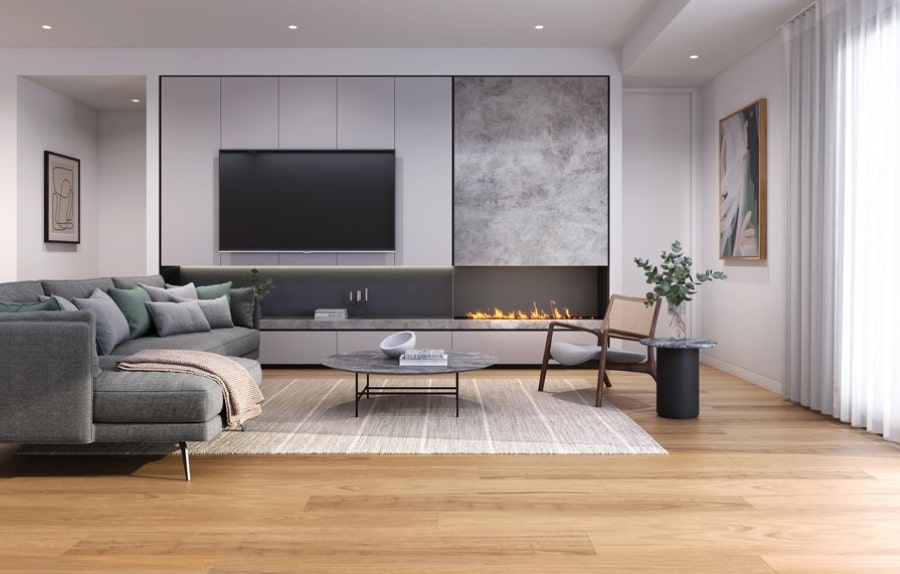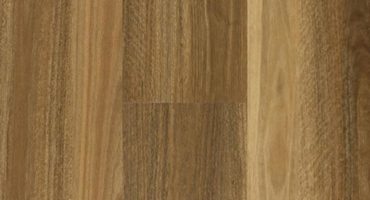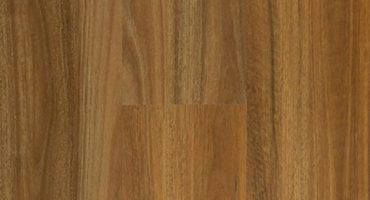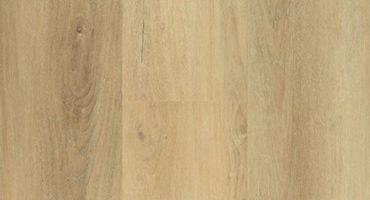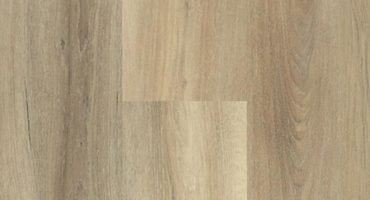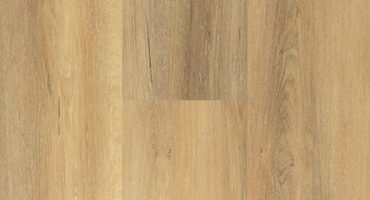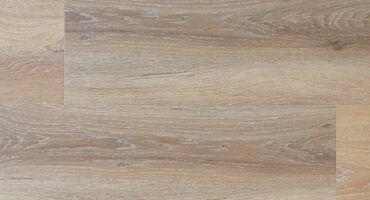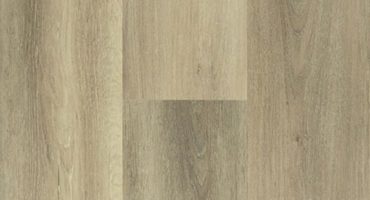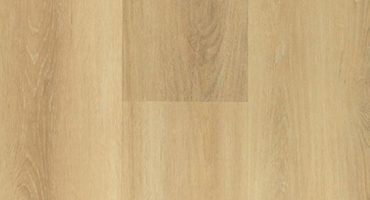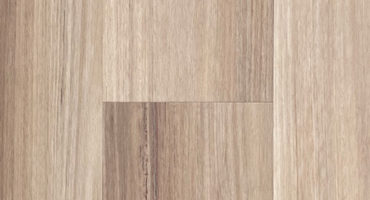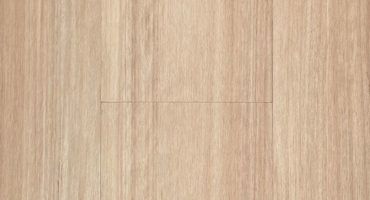Thinking about hybrid flooring but unsure what it’ll set you back? You’re not alone. As one of the fastest-growing flooring types in Australia, hybrid’s popularity has spiked, and with that comes a lot of questions around retail price and installation costs.
I’ve been in the flooring game for over 25 years, and I’ve seen it all, from insurance claims and dodgy sales tactics to overpriced quotes. I will share what you genuinely need to budget for your project. Whether renovating a rental property or creating your dream home, you’ll find clear, unbiased pricing information based on real Australian projects.
Hybrid Flooring Cost at a Glance
- Hybrid flooring prices range from $30 to $70/m² for materials alone
- Installation adds another $25–$30/m² on average
- SPC hybrid is almost always more stable than WPC in Australian homes
- Premium hybrid floors offer better visuals, warranties, and wear resistance
- Prep work and smart shopping can reduce your total hybrid flooring cost
- Expect combined supply and install pricing to fall between $50–$100/m²
What Makes Hybrid Flooring Different?
Hybrid flooring combines the strengths of laminate and vinyl, creating a waterproof, rigid, and stylish option perfect for Aussie homes. It features:
- Wear Layer – A transparent protective coating that defends against daily wear, scratches, stains, and UV fading
- Design Layer – High-definition printing technology that creates remarkably realistic wood or stone visuals
- Core Layer – Generally, either Stone Plastic Composite (SPC) or Wood Plastic Composite (WPC) forms the rigid, waterproof core
- Backing Layer – A stabilising base that often incorporates acoustic dampening properties
This advanced construction creates a 100% waterproof product that doesn’t compromise on appearance or durability. The rigid core technology also means many hybrid floors can be installed directly over imperfect subfloors, something that’s rarely possible with traditional options.
Hybrid Flooring Prices by Quality Level
Having sold and installed thousands of square meters of hybrid flooring, I’ve noticed distinct price brackets that reflect meaningful differences in quality and performance:

Expert Insights From Clem Sturgess
20+ years' experience in hard flooring
This is the pricing that you are likely to pay through us. With a Physical Flooring Store, you are likely to pay 20-50% more for the product. It is also not often possible in a physical store to have the advice of someone with 20+ years of experience, such as myself.
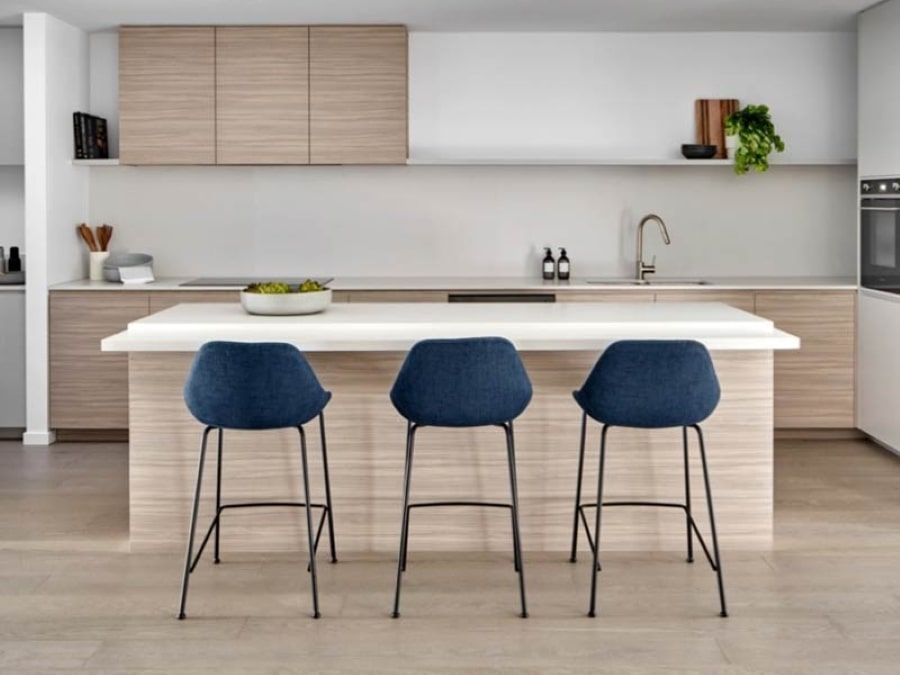
Sunstar Hybrid Classics
Entry-Level Hybrid ($25–$35/m²)
Recommended Product: Sunstar Hybrid Classics
At this price point, expect:
- Fundamental design options with limited colour variations
- Protective wear coatings measuring around 0.5mm or less
- Basic core construction (typically 5-6mm in thickness)
- Entry-level click-lock joining systems
- Warranties in the 10-15 year range
- Residential-grade durability ratings (AC3)
These products serve perfectly well in low-traffic environments or where budget constraints are paramount. They’ll deliver the hybrid’s signature waterproof properties, but may lack the sophisticated appearance and longevity of higher-tier options.
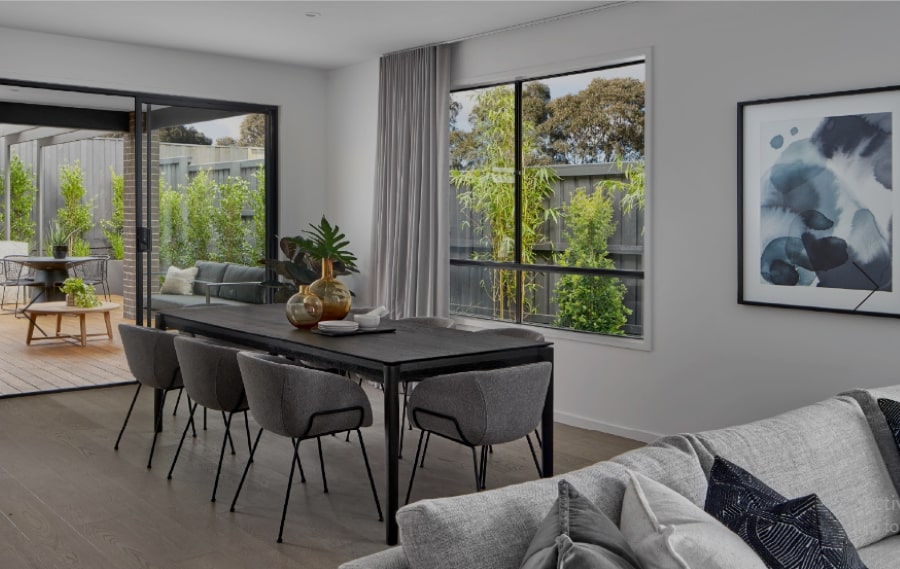
Eclipse Elysium Hybrid Flooring
Mid-Tier Hybrid ($35–$50/m²)
Recommended Product: Eclipse Elysium
Step up to this category and you’ll find:
- Richer, more varied design selections with enhanced realism
- Tougher protective surfaces (0.5 mm wear layers)
- Improved core structure (generally 6-7mm thick)
- More sophisticated and secure joining mechanisms
- Coverage extending 15-20 years in most warranties
- AC3 or AC4 ratings are suitable for busy households
This price bracket represents the “value sweet spot” for most Australian homes in terms of value. Products here strike an effective balance between longevity, appearance and cost-effectiveness, particularly for families with children, pets, or active lifestyles.
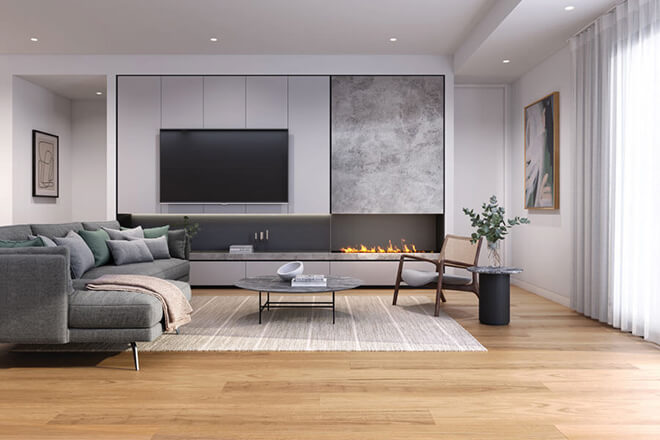
Eclipse Stone-Tek Hybrid Flooring
High-End Hybrid ($50–$70/m²)
Recommended Product: Eclipse Stone-Tek
Premium hybrid flooring offers:
- Exceptional visual fidelity with sophisticated texturing techniques
- Commercial-grade wear protection (0.6 mm+)
- Superior core engineering (7 mm+ thickness)
- Enhanced dimensional stability and sound-dampening qualities
- Extended warranty coverage (often 20+ years)
- Advanced technological features like enhanced click systems, higher quality imagery and a greater number of patterns
These top-tier products command higher prices but deliver noticeable performance advantages. For high-traffic zones or when exceptional aesthetics are non-negotiable, this category often represents sound long-term value despite the upfront premium.
AC Ratings Explained
AC (Abrasion Class) ratings indicate a hybrid or laminate floor’s durability and suitability for different traffic levels:
- AC1: Only suitable for very light residential use (bedrooms)
- AC2: Light residential traffic (living rooms, dining rooms)
- AC3: Moderate residential and light commercial use
- AC4: Heavy residential and moderate commercial use
- AC5: Heavy commercial use (shops, offices, public spaces)
- AC6: Very heavy commercial use (airports, shopping centres)
Higher AC ratings generally correlate with more durable wear layers and increased cost, but deliver greater long-term performance in high-traffic areas.
Key Factors That Drive Hybrid Flooring Prices
Beyond the basic quality tiers, several specific elements influence what you’ll pay:
Core Construction Technology
The composition of the central layer significantly impacts both price and performance:
SPC (Stone Plastic Composite): This core utilises limestone, PVC, and stabilisers to create an exceptionally dense, solid, and rigid foundation. They typically range from $30–50/m² and offer superior dimensional stability, strength, and dent resistance. The solid composition of SPC means it maintains an optimal weight-to-wear layer ratio, making it less susceptible to temperature-related issues that can cause ballooning or lifting in areas exposed to direct sunlight. SPC is less affected by temperature fluctuations, making it more versatile for a variety of installations, including areas with significant sunlight exposure.
WPC (Wood Plastic Composite): These cores feature an aerated structure that makes them up to 41% lighter than SPC products of comparable thickness. While commanding a $5–10/m² premium over comparable SPC products due to more labour-intensive construction (requiring an additional vinyl layer between the design layer and core), WPC’s lighter weight creates potential stability concerns. The aerated core requires approximately 44% greater thickness to achieve comparable strength to SPC. It may not even maintain the optimal weight-to-wear layer ratio needed for maximum stability in varying temperature conditions.
Choose SPC Hybrids
In my professional experience, after testing numerous flooring installations, SPC hybrid flooring excels in virtually every performance category except acoustic damping. For both residential and commercial Australian settings, particularly in areas with temperature fluctuations or direct sunlight, solid core SPC represents the more reliable, stable, and durable choice.
When retailers promote WPC products without clearly identifying them as “aerated core” or label them as “hybrid” without specifying the core type, they’re omitting crucial information that impacts long-term performance and customer satisfaction.
In you are still unsure, we recommend the following articles:
- SPC vs WPC Comparison – If you’re unsure which core type is right for your home, this guide breaks it down clearly.
- Is Thicker Hybrid Better? – Thinking thicker means stronger? Take a look at what actually makes a floor more stable.
Protective Surface Technology
The durability of hybrid flooring correlates directly with its wear layer thickness:
- Light-duty residential use: 0.3mm suffices for bedrooms and less frequented spaces
- Standard family environments: 0.5mm provides balanced protection for most situations
- Commercial or high-traffic residential: 0.7mm ensures maximum resistance to scratches and wear
Manufacturers typically charge $3–5 per square meter more for each 0.1mm increase in wear layer thickness, which is a worthwhile investment for high-activity zones.
Best online shop ever! More reliable and responsive than many physical stores. This isn’t my first time here—and definitely won’t be the last. Huge thanks to the whole team, especially Clem, who’s always on the front line and does a fantastic job!
Board Dimensions and Design
The size and complexity of hybrid floorboards directly affect pricing:
- Conventional plank sizes: (approximately 1220mm × 180mm) represent the baseline pricing
- Extended length boards: (1500 mm+) typically add 10–15% to the base price
- Wider planks: (220 mm+ width) often command similar premiums
- Specialised formats, like herringbone or chevron patterns, can increase costs by 15–25%
While larger or more distinctive boards generally cost more, they can dramatically influence how spacious your room feels by reducing the visual interruption of seams and joints.
Manufacturing Origin
Country of manufacture plays a surprising role in pricing:
- Chinese production dominates the market
- European manufacturing adds roughly $10–15/m² for similar specifications
- Australian-designed products with offshore manufacturing often occupy the middle ground
Comparing Costs: Hybrid vs Other Popular Flooring Types
To put hybrid flooring prices in perspective, let’s compare them with alternatives:
Hybrid vs Laminate Flooring
Traditionally, the budget-conscious choice:
- Price positioning: Overlaps exist, but a hybrid typically costs 5–10% more than a laminate with similar visual qualities in mid-range products. Laminate has a lower low end and a higher high end.
- Critical difference: Complete waterproofing versus water-resistance only
- Installation pricing: Nearly identical ($25–40/m²)
- Expected lifespan: Similar (10–30 years) with proper maintenance
The price premium for hybrid flooring directly translates to its superior waterproofing capabilities, making it suitable for most wet areas where laminate isn’t appropriate.
For a more in-depth comparison, we recommend reading “Hybrid vs Laminate Flooring: What’s the Difference?“.
Hybrid vs Vinyl Planks
Its closest competitor in the waterproof category:
- Cost relationship: Standard vinyl typical costs are very similar for hybrids of comparable quality
- Structural differences: Hybrid’s rigid core versus vinyl’s flexibility
- Installation considerations: Hybrid’s rigid construction accommodates minor subfloor imperfections more effectively than vinyl. Vinyl also requires adhesive, but has a lower installation cost.
- Performance tradeoffs: Hybrid provides superior stability and comfort underfoot. This is paradoxical as vinyl is softer, but bonds directly to concrete, with no underlay layer.
Hybrid’s price premium over vinyl delivers tangible benefits in larger spaces or areas with minor subfloor irregularities that would cause issues through standard vinyl products.
For more of an in-depth comparison, read Vinyl vs Hybrid Flooring Options.
Hybrid vs Engineered Timber
For those seeking authentic timber aesthetics:
- Price gap: Engineered timber generally runs $25–50/m² higher than premium hybrid ($70–120/m² typical range)
- Authenticity factor: Real timber veneer versus printed imagery
- Moisture considerations: Hybrid’s complete waterproofing versus timber’s vulnerability
- Longevity comparison: Engineered timber can potentially be refinished, extending its functional lifespan
While significantly more expensive, engineered timber delivers genuine wood that even the most advanced printing technologies can’t perfectly replicate.
Hybrid vs Tile Flooring
Another fully waterproof alternative:
- Material cost spectrum: Ceramic tiles span from $30 to $140/m²
- Installation differential: Tile installation demands considerably more labour ($50–130/m²)
- Physical properties: Hybrid offers a warmer, more forgiving surface underfoot
- Practical considerations: Hybrid installation creates significantly less disruption and mess
While premium tiles might cost more per square metre than hybrid products, the substantial installation price difference makes hybrid considerably more economical as a total installed package. Additionally, the removal of a hybrid can be done with very little effort. Removing tiles is floor surgery.
Installation Expenses Explained
Self-Installation vs Professional Fitting
The labour component substantially impacts your total project cost:
DIY Approach – What You’ll Need
If you possess reasonable skills:
- Moisture membrane (for concrete subfloors): $1–2/m²
- Transition profiles between rooms: $10–20 per doorway
- Basic tooling: Budget $100–250 if you don’t already own appropriate equipment
- Time investment: Typically several hours for an average-sized room
- Potential cost avoidance: Around $25–30/m² compared to professional installation
Professional Installation Breakdown
Hiring experienced installers typically involves:
- Labour charges: $25–30/m² for straightforward installation
- Subfloor rectification: Adds $10–20/m² for significant levelling requirements
- Existing floor removal: $5–20/m² depending on the material being removed
- Trim work: $5–10 per linear metre for skirting removal/replacement
I’ve observed that professional fitting often delivers superior results in challenging areas, such as doorjambs, cabinets, and complex room layouts, where DIY installations frequently encounter difficulties but can enjoy significant savings.
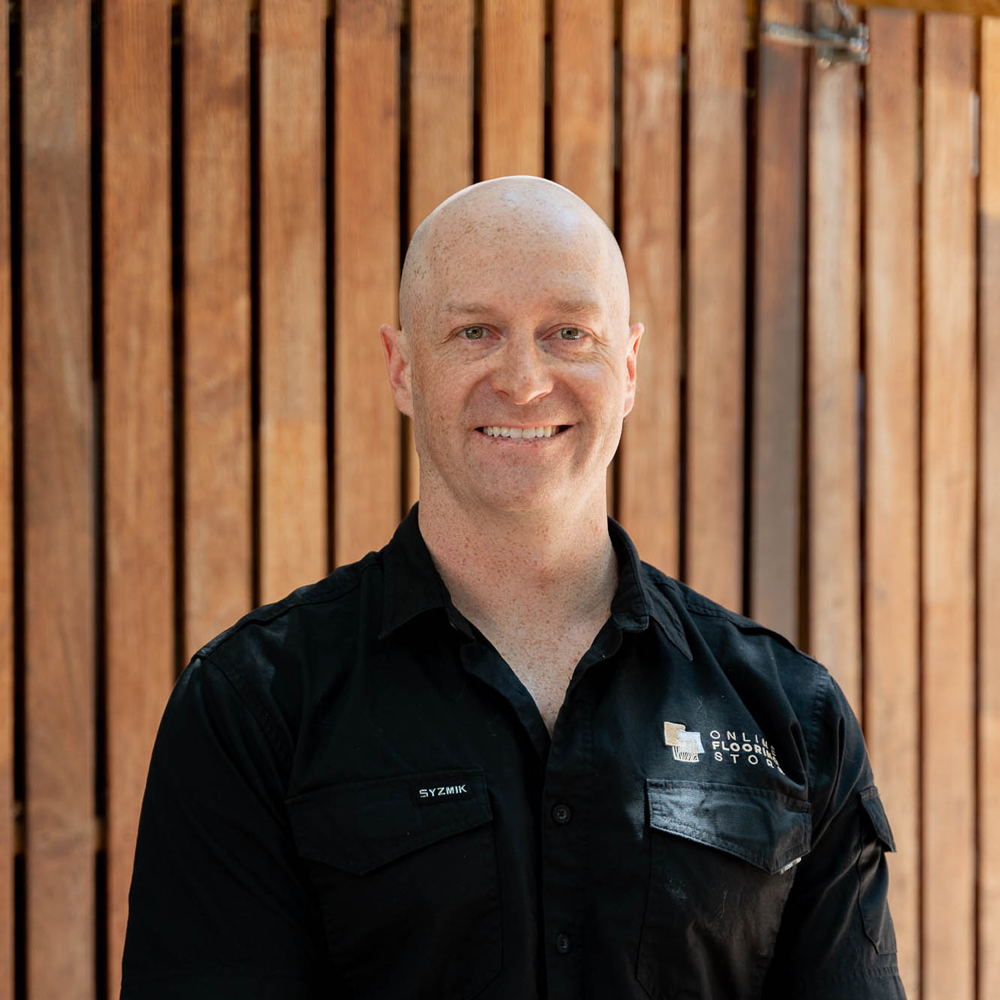
Expert Insights From Levi Saunders
Online Retail Specialist & Flooring Content Creator
Expert insight: Through any installation process, it is paramount that you adhere to the supplier guidelines for the installation of your hybrid product. Failure to do so can result in a product warranty becoming void. It is best to always run through this with your installer to make sure they are on board (pardon the pun).
Money-Saving Preparation Strategies
To reduce professional installation costs without tackling the entire job yourself:
- Handle furniture removal and relocation
- Remove existing carpet and underlay
- Pull up existing skirting boards with caution (if required)
- Thoroughly clean the subfloor area
These preparatory steps can potentially reduce professional labour costs by $5–10/m² while allowing experts to handle the technical aspects of installation.
Getting Transparent Quotes
Professional quotes should specify:
- Exactly what subfloor preparation is included
- Moisture testing and barrier requirements
- All transition pieces and threshold treatments
- Approach to skirting boards
- Furniture moving services
- Disposal of existing flooring materials
Always obtain detailed written quotations from multiple providers. I’ve frequently seen quoted prices vary by 20–30% between installers for identical work scopes.
Price Differences Across Australian Regions
Regional variations significantly impact installation pricing:
- Major metropolitan areas (Sydney, Melbourne) typically charge 10–20% more than regional centres
- Limited installer availability in rural areas can sometimes drive premium pricing
- Remote locations often incur travel and freight charges or minimum project requirements
- Local market conditions (like construction booms) can temporarily inflate labour costs
These geographical variations can substantially impact your total project budget, making the DIY approach more attractive in high-cost regions.
Extra Costs Most People Forget to Budget For
Subfloor Assessment and Preparation
Proper subfloor condition is critical for hybrid flooring performance:
- Basic preparation (cleaning and minor levelling): $0–5/m²
- Moderate subfloor remediation: $10–15/m²
- Substantial levelling or moisture management: $15–30/m²
While a hybrid board’s rigid construction tolerates slight imperfections better than some alternatives, significant subfloor issues must be addressed for warranty compliance and long-term performance. Subfloor preparation is critical for long-lasting floors.
Disposal of Previous Flooring
Budget for these removal and disposal charges:
- Carpet extraction: $5–8/m²
- Vinyl lifting: $8–12/m²
- Ceramic tile demolition: $15–30/m²
- Timber or engineered wood removal: $15–25/m²
Environmental disposal fees can add substantially to these figures, particularly for synthetic materials. Some contractors offer reduced rates if you handle disposal independently.
Finishing Elements
These essential components complete the installation:
- Edge termination profiles: $10–15 per linear metre
- Room transition strips: $15–25 per linear metre
- Stair edge treatments: $30–50 per step
- Perimeter trim (scotia or beading): $3–7 per linear metre
These finishing elements commonly add $300–600 to the overall project investment for a typical three-bedroom residence.
Strategic Shopping to Maximise Value
Take Advantage of Seasonal Promotions
Significant discounts regularly appear during:
- End of financial year clearances
- Post-Christmas inventory reductions
- Display floor stock liquidations
During these promotional periods, patient shoppers can often secure premium products at mid-range prices, with discounts of 20–30% not uncommon.
Look Beyond Current Collections
Manufacturers routinely update their design portfolios, creating opportunities:
- Discontinued colourways often sell at 30–40% discounts
- Last season’s designs frequently offer identical technical specifications to current ranges
- Floor stock and display models sometimes sell at substantial markdowns
These options deliver identical performance at reduced prices; the only sacrifice being that you’re not selecting from the very latest design catalogue.
Leverage Volume Purchasing
For larger projects (generally 1,000 m² or more), suppliers frequently offer quantity-based discounting. A straightforward request for improved pricing on larger orders can yield material cost savings of 5–15%.
Don’t Accept the First Quote
Price variability between retailers for identical products can be surprising:
- I regularly observe 15–20% price differences between suppliers for the same product
- Some retailers have greater negotiating flexibility than others
- Package deals (including installation) sometimes offer better value than separate purchases
Investing time in obtaining multiple quotes consistently delivers substantial savings.
Measurement Guidelines for Accurate Budgeting
Precision in measuring significantly impacts your budget:
- Always measure each room twice for verification
- Calculate actual square meterage plus 5–10% for wastage (use higher percentages for complex layouts)
- Don’t include areas beneath fixed cabinetry in your calculations
- Account for doorways and transitions between spaces
Accurate measurements prevent both costly material shortages during installation and unnecessary expenditure on excess product.
Real Project Cost Examples
To illustrate total project investments, here are three real-world scenarios:
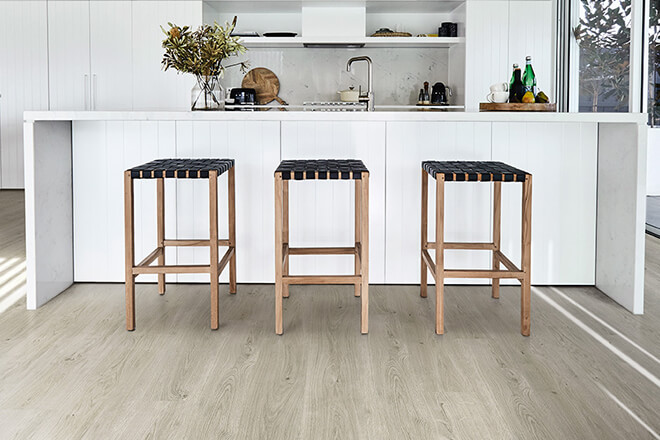
Premium Floors Titan Hybrid
Budget-Conscious Approach: 70m² Home
- Entry-level hybrid flooring: $30/m² × 70m² = $2,100
- DIY installation (using existing tools) = $0
- Basic transitions and trim work: $200
Total project investment: Approximately $2,300 ($32.85/m²)
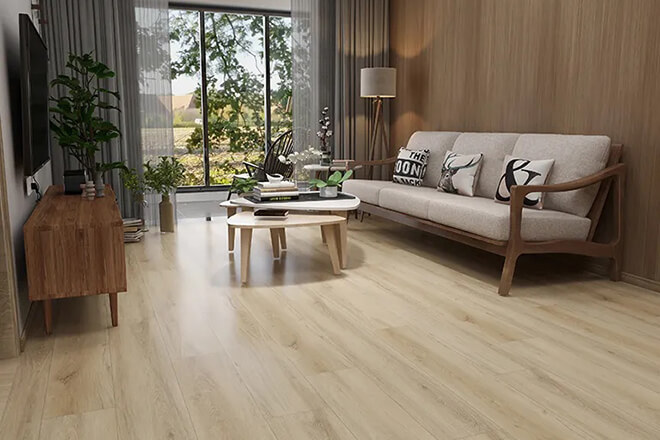
Inspire XL Hybrid Flooring
Mid-Range Implementation: 70m² Home
- Quality hybrid flooring: $40/m² × 70m² = $2,800
- Professional installation: $30/m² × 70m² = $2,100
- Existing carpet removal: $7/m² × 70m² = $490
- Transitions and trims: $350
Total project investment: Approximately $5,740 ($82/m²)
Premium Transformation: 70m² Home
- High-end hybrid flooring: $60/m² × 70m² = $4,200
- Professional installation with comprehensive subfloor work: $40/m² × 70m² = $2,800
- Ceramic tile removal: $20/m² × 70m² = $1,400
- Custom transitions and new skirting: $600
Total project investment: Approximately $9,000 ($128.57/m²)
These scenarios illustrate how material selection and installation approach dramatically influence overall project costs.
Smart Contingency Planning
Experience has taught me that setting aside 10–15% of your anticipated budget for unforeseen expenses is prudent:
- Concealed subfloor issues that become apparent during installation
- Additional vapour barrier requirements
- Extra transition pieces for level variations
- Unexpected skirting or architrave replacements
This financial buffer prevents project delays when unexpected challenges inevitably arise.
Hybrid Offers Exceptional Value Within Its Price Range
Regardless of your budget constraints, today’s hybrid flooring market likely offers solutions aligned with your needs. The critical consideration isn’t necessarily finding the cheapest option, but rather identifying where to allocate your budget for maximum long-term satisfaction, typically in aspects like wear layer thickness, core construction quality, and professional installation.
While the upfront price naturally influences purchasing decisions, factors such as warranty coverage, water resistance capability, and wear characteristics ultimately determine the long-term value proposition of your floor. Investing strategically in these critical areas typically yields superior returns over the lifetime of your flooring.


